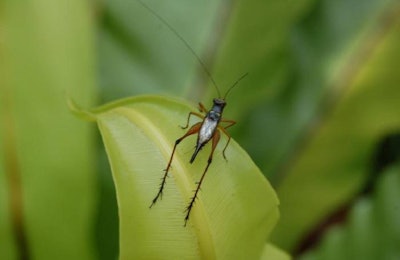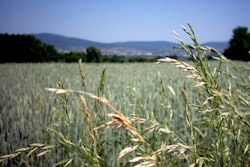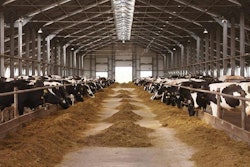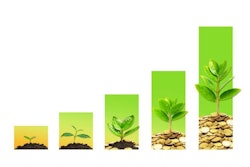
The potential for using insect protein as a source of animal feed for pigs, poultry and fish in the European Union was described as “huge” at a recent conference organized by PROteINSECT in Brussels.
While the deliberate feeding of insect protein to farmed animals intended for food is not permitted under EU law, there is a growing desire to reduce reliance on imports of protein feeds from non-EU countries, according to Adrian Charlton of Fera Science in the U.K. Recognized for its global expertise in safety assessments and quality data, Fera Science has been investigating the implications of feeding insects to livestock as a source of protein as part of the PROteINSECT project.
“Environmental concerns and the EU protein deficit, along with fluctuating global protein prices, are huge concerns and it is important we look at additional sources of protein to achieve a sustainable U.K. agriculture,” said Charlton. Insects are an innovative new source of feed. And, according to initial studies, a viable option for farmers to consider for inclusion in livestock diets. They are also a natural component of the diet of poultry, pigs and fish, so it is logical to investigate the options of feeding insects.
“There is a lot of work to do to understand and manage safety risks for animal feed, however, early indications are very promising. In terms of a protein source, insect protein is around 86-89 percent digestible, which is significantly higher than most vegetable-based protein. There is also the potential for high value by-products such as fats and oils.
More efficient protein?
Combined with potential production efficiencies, insect feed is attractive for the future of animal nutrition. For example, soybean yields around 0.9 metric tons (mt) per hectare (0.36 tons/acre) of protein, compared with insects that potentially yield 150 mt per hectare (60 tons/acre) protein. That offers the potential of a 200-fold reduction in land use.
Charlton stressed the need to understand the methods of production, the costs of production and the safety elements, but “early data suggests this is a viable option for the future,” he said.
“As part of this research, insects were fed to quality-assured animal trials in late 2015/early 2016, under the protocol of European feed industry standards,” Charlton said. “Control diets contained fishmeal. This was substituted at a range of varying inclusion levels with insect meal. The results showed that all animals performed in line with controls.”
Samples of the fish, chicken and pork were also analyzed for contaminants, taints and changes in nutritional profile, and no difference was found.
To coincide with the conference, PROteINSECT published a white paper. The document, titled “Insect Protein – Feed for the Future: Addressing the need for feeds of the future today,” covers safety, nutritional value, environmental impact, commercialization and consumer acceptance of insect protein in animal feed. It endorses two key actions: to review key EU regulations that prohibit the production and feeding of insects to livestock, and to present data to allow the European Food Safety Authority (EFSA) to carry out a full risk profile for insects reared on organic wastes.
PROteINSECT is an EU-funded project enabling the exploitation of insects as a sustainable source of protein for animal feed and human nutrition. Bringing together expertise from China, Africa and Europe, the project has 12 partners from 7 countries and is coordinated by Fera Science Ltd.
It was reported late last year that changes to the regulations indicate that insect protein may soon enter the animal feed market in the European Union.














